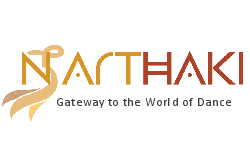 |
 |
Pushed –
A unique Indo-Korean dance venture
December 27, 2006
The title "Pushed" is a metaphor for this dance structurally and conceptually. All the movements – solo, duet, group - consisted of images where the physical act of pushing was an important element. Every image created through movements resonated the act of pushing. So, in a sense "Pushed" was the content as well as the structure through technique. It could be taken as a metaphor for individuals pushing (extending) their bodies to their possible limits to attain a certain kind of precise and aesthetic balance. In a pair of two dancers, this pushing took on a different dimension- each one pushing her partner and still maintaining a balance. In the group sequences the pushing took on the complexion of a well timed and highly coordinated movement style. But, apart from its physical implications, this pushing had a conceptual underpinning also. Pushing could be gentle, moderate or hard. The effects could be salutary or destructive. It could result in binary opposites in emotional states; Pleasure could result in pain, joy in sorrow, love in any one of the above-mentioned, or in anger or lust (desire). But, the polarities are not the only elements to be noticed. The transition from one state of emotion to another, the very transient and probably seamless nature of this transition and the balance that is arrived at during this constant movement are also important. Padmini explains this movement from one emotion to another thus, "The intention is to blur the lines of emotionality. To move the emotional from the tangible subjective to the intangible objective. So we are left with the idea of transactions between bodies and between the bodies and the performing space. Emotion is then our ability to find balance but also to lose. It is the tightrope that takes us from the highs to lows and back up again – not just once or twice but in endless repetition." There are other structural elements which come into play during each stage of the dance. There is a constant movement from the right foreground of the stage to the left background of the stage. There is also a progression in body postures - from standing to hanging on hands and legs (a middle position) to floor level movements. Each section of the dance progresses logically to the next one and finally moves on towards a climax which is peaceful, silent and therapeutic. If one were to comment on the texture of movements, they are slow, reflective and meditative. They give time for the audience to savor the purity of movements, the tautness and tension of the bodies when the movements are created and how through these movements images can be created.
The general theme is emotions and Padmini has used as reference point, the Korean concepts of emotion, which comes in pairs - Pleasure, Pain, Joy, Sorrow, Love, Anger and Lust. And yet these emotions are not conveyed through direct facial expressions or illustrative, narrative texts. They are abstracted and conveyed through body movements. The dance was created in silence; the music came later. Marten, the composer’s objective was to create a sound track which would enhance the dance not complement it. He has pared it into sounds without the ornateness of melody or emotion. The rhythm is there, but again, it is not just a rhythm that keeps time for the dance movements. Even though the sounds are produced by traditional Korean musical instruments, Marten has not limited his composing to copying or reproducing bits of traditional Korean music. Even as Padmini has created images through movements, Marten also has created sound images that supplement the movement images. Zuleikha's lighting also while enhancing the dance movements had its own pattern and life. The main elements
in this production, the movements, the music and the lighting, worked independently
as well as in unison. That this is the only entry from India in this
prestigious international festival speaks volumes about its uniqueness.
Vasanthi
Sankaranarayanan is a Chennai based art critic and a regular contributor
to narthaki.com
|